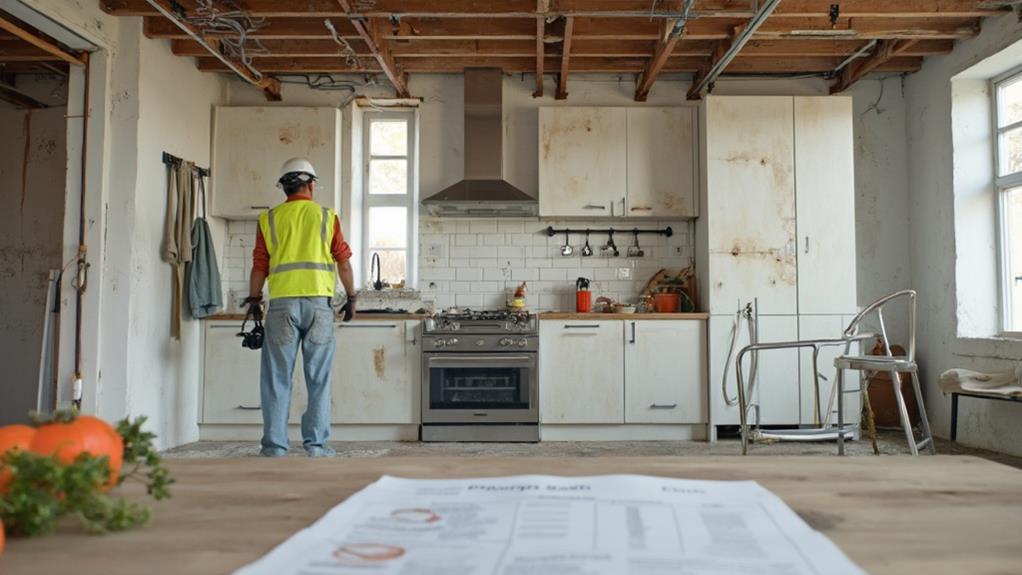Prioritizing safety upgrades in a renovation requires a systematic approach. Start by conducting a thorough assessment of your home's electrical,
Assessing Your Home's Safety Needs
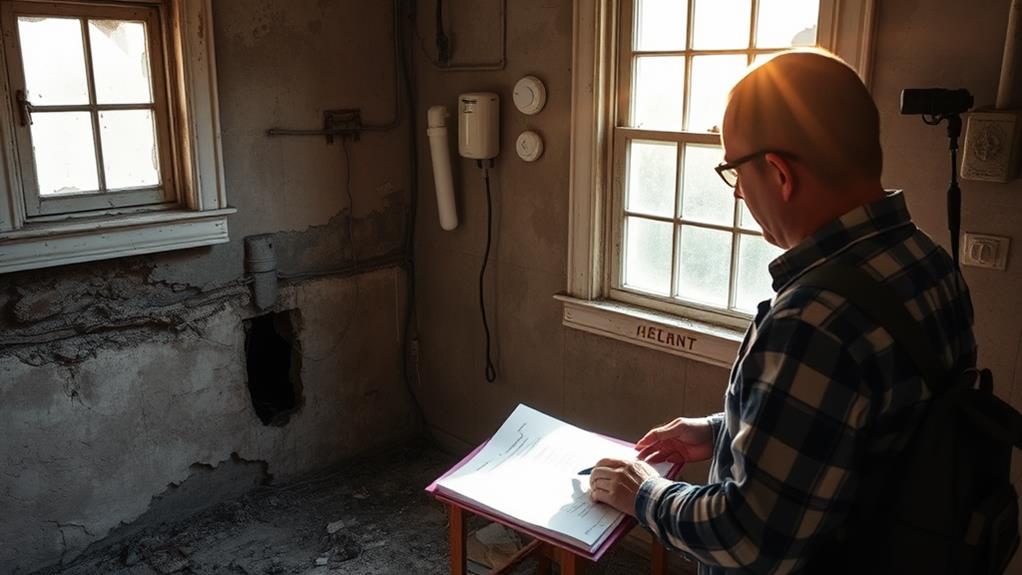
Before embarking on any safety upgrades during a renovation, it's crucial to conduct a thorough assessment of your home's existing safety features and potential hazards. Start by evaluating key areas such as electrical systems, fire safety measures, structural integrity, and security features.
Inspect wiring, outlets, and circuit breakers for signs of wear or outdated components. Check smoke detectors, carbon monoxide alarms, and fire extinguishers for proper functioning and placement.
Examine your home's foundation, walls, and roof for any signs of damage or weakness. Assess windows and doors for secure locks and potential entry points. Consider the safety of staircases, railings, and flooring materials. Don't forget to evaluate outdoor spaces, including lighting, walkways, and potential tripping hazards.
For a comprehensive assessment, consider hiring a professional home inspector or safety consultant. They can provide expert insights and identify issues you may overlook. Once you have a clear picture of your home's safety needs, prioritize upgrades based on urgency and potential impact. This assessment will serve as the foundation for your safety upgrade plan, ensuring that your renovation efforts address the most critical areas first.
Electrical System Upgrades
Numerous electrical system upgrades can significantly enhance your home's safety during a renovation. Start by replacing outdated wiring, particularly in older homes with aluminum or knob-and-tube wiring, which pose fire hazards.
Install ground fault circuit interrupters (GFCIs) in areas prone to moisture, such as kitchens, bathrooms, and outdoor outlets, to prevent electric shocks. Upgrade your electrical panel if it's undersized or outdated, ensuring it can handle modern appliances and electronics.
Consider adding arc fault circuit interrupters (AFCIs) to bedroom circuits, as they detect electrical arcs that could lead to fires. Replace old, worn-out outlets and switches, and install tamper-resistant receptacles in areas accessible to children.
Implement whole-house surge protection to safeguard sensitive electronics and appliances from power surges. If your home lacks proper grounding, address this issue to reduce the risk of electrical fires and equipment damage.
Fire Prevention Measures
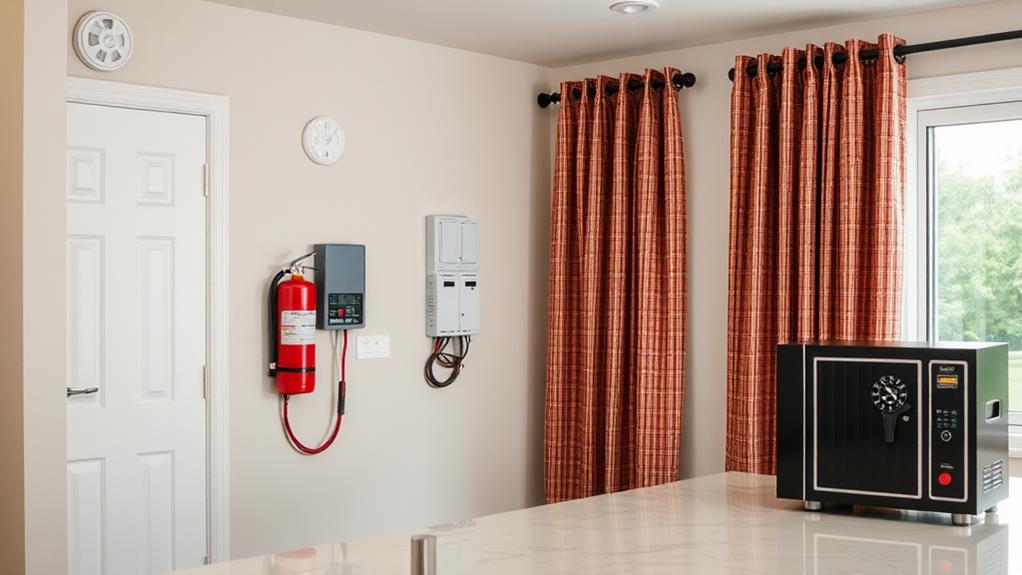
Implementing robust fire prevention measures is crucial during home renovations to enhance overall safety. Begin by installing interconnected smoke detectors on every floor and in all bedrooms, ensuring they are hardwired with battery backup. Consider adding heat detectors in areas prone to false alarms, such as kitchens and bathrooms.
Upgrade to fire-resistant building materials, including fire-rated drywall and insulation. Replace outdated wiring and outlets to reduce electrical fire risks. Install arc fault circuit interrupters (AFCIs) to detect electrical arcing and prevent fires. Ensure proper ventilation for appliances and HVAC systems to minimize overheating.
Create fire barriers between living spaces and potential hazard areas like garages or utility rooms. Install fire-resistant doors and consider fire-rated windows in high-risk areas. Implement a residential fire sprinkler system for comprehensive protection, especially in multi-story homes or those with limited escape routes.
Lastly, develop and practice a fire escape plan with clearly marked exits and meeting points. Keep fire extinguishers readily accessible on each floor and near potential fire sources. Regularly maintain all fire prevention systems to ensure their effectiveness in emergencies.
Structural Integrity Improvements
While fire prevention measures safeguard against potential hazards, addressing structural integrity ensures the long-term stability and safety of a renovated home. Structural improvements should focus on reinforcing key elements of the building, including the foundation, load-bearing walls, and roof.
Begin by assessing the current condition of these components through a professional inspection. Identify any signs of damage, such as cracks in the foundation, sagging floors, or water infiltration. Prioritize repairs based on severity and potential risks to occupants.
Foundation reinforcement may involve underpinning, installing support piers, or addressing drainage issues to prevent future damage. For walls, consider adding steel braces or replacing deteriorated studs. Roof improvements might include reinforcing trusses, replacing damaged sheathing, or upgrading to impact-resistant materials in storm-prone areas.
When budgeting for structural upgrades, factor in both immediate repair costs and long-term benefits. While these improvements can be expensive, they significantly enhance the safety and value of your home. Additionally, consult local building codes to ensure compliance and obtain necessary permits before commencing work. By investing in structural integrity, you create a safer living environment and protect your renovation investment for years to come.
Water and Plumbing Safety
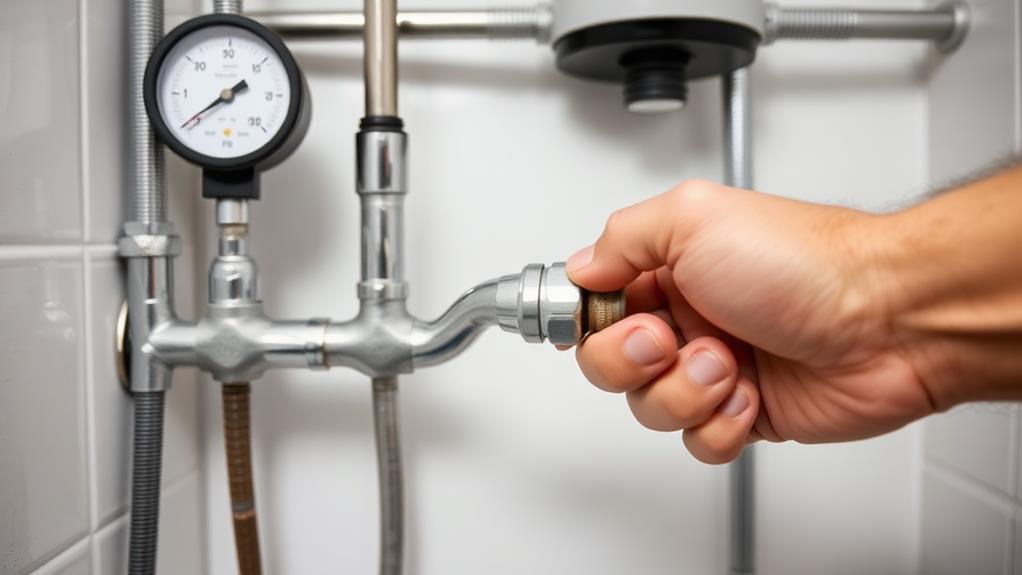
Water, the lifeblood of any home, requires careful consideration during renovation to ensure safety and efficiency. Prioritizing plumbing upgrades can prevent costly water damage and health hazards.
Start by inspecting existing pipes for leaks, corrosion, or outdated materials like lead. Replace these with modern, safe alternatives such as copper or PEX piping.
Install water filtration systems to improve water quality and protect against contaminants. Consider upgrading to low-flow fixtures to conserve water and reduce utility costs. Proper insulation of pipes prevents freezing in cold climates and improves energy efficiency.
Ensure adequate water pressure throughout the home by addressing any issues with the main water line or pressure regulators.
Don't overlook the importance of proper drainage**. Upgrade or repair sewage lines to prevent backups and install backflow prevention devices to protect your home's water supply from contamination. In areas prone to flooding, consider installing a sump pump system**.
Indoor Air Quality Enhancements
Breathing new life into your home's atmosphere, indoor air quality enhancements are crucial for creating a healthier living environment during renovations. These improvements can significantly reduce exposure to pollutants, allergens, and harmful chemicals that may be present in your home.
Start by installing high-efficiency particulate air (HEPA) filters in your HVAC system to capture microscopic particles and improve overall air quality. Consider adding air purifiers in key areas of your home, such as bedrooms and living spaces.
Proper ventilation is essential, so invest in energy-efficient exhaust fans for kitchens and bathrooms to remove excess moisture and odors.
Choose low-VOC (volatile organic compound) paints, adhesives, and flooring materials to minimize off-gassing of harmful chemicals. Install carbon monoxide detectors on each floor of your home for added safety.
Regular maintenance of your HVAC system, including duct cleaning and filter replacements, is crucial for maintaining good air quality.
Lastly, incorporate natural air purifiers like indoor plants that can help filter the air and add a touch of nature to your living spaces. These enhancements not only improve your home's air quality but also contribute to a more comfortable and healthier living environment.
Fall Prevention Strategies
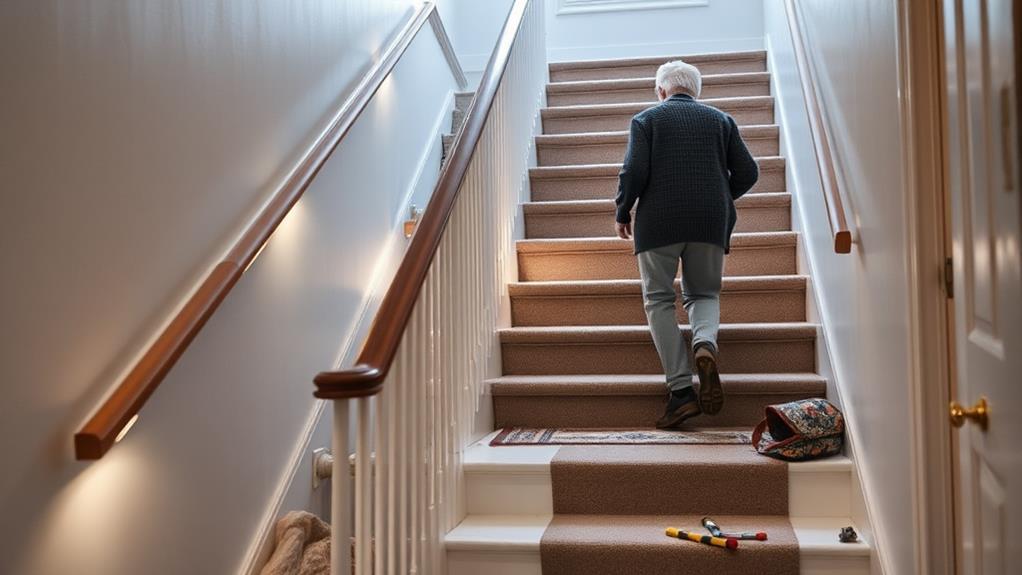
Shifting our focus from air quality to ground-level safety, fall prevention strategies play a vital role in home renovations. These measures are essential for reducing the risk of accidents, especially for elderly residents or households with young children. Key areas to address include staircases, bathrooms, and uneven surfaces throughout the home.
For staircases, install sturdy handrails on both sides and ensure proper lighting. Consider adding non-slip treads or carpeting to improve traction. In bathrooms, focus on installing grab bars near toilets and in showers. Use non-slip mats or textured flooring to prevent slips on wet surfaces.
Throughout the house, secure loose rugs with non-slip pads or replace them with low-pile carpeting. Improve lighting in hallways and entryways to illuminate potential trip hazards. Remove clutter and reorganize furniture to create clear pathways.
For outdoor areas, repair uneven walkways and add handrails to steps. Consider installing motion-sensor lights for better visibility at night. When budgeting for these upgrades, prioritize high-risk areas and essential modifications. Many fall prevention strategies are cost-effective and can significantly enhance home safety for all occupants.
Security System Integration
Modern technology has revolutionized home security, making Security System Integration an essential consideration in renovation projects. When planning upgrades, prioritize a comprehensive system that includes smart locks, surveillance cameras, motion sensors, and a central control hub. These components work together to provide real-time monitoring and remote access to your home's security features.
Smart locks offer keyless entry and the ability to grant temporary access codes to visitors or service providers. Surveillance cameras with high-resolution video and night vision capabilities can be strategically placed around the property's exterior and interior. Motion sensors can detect unauthorized movement and trigger alerts or activate lighting systems. The central control hub connects all these elements, allowing homeowners to manage their security system via smartphone apps or voice commands.
When budgeting for security system integration, consider both upfront costs and ongoing expenses such as monitoring services or cloud storage for video footage. Prioritize essential features based on your specific needs and gradually expand the system over time. Professional installation may be necessary for complex setups, ensuring proper integration with existing home systems and optimal placement of components for maximum effectiveness.
Budgeting for Safety Upgrades
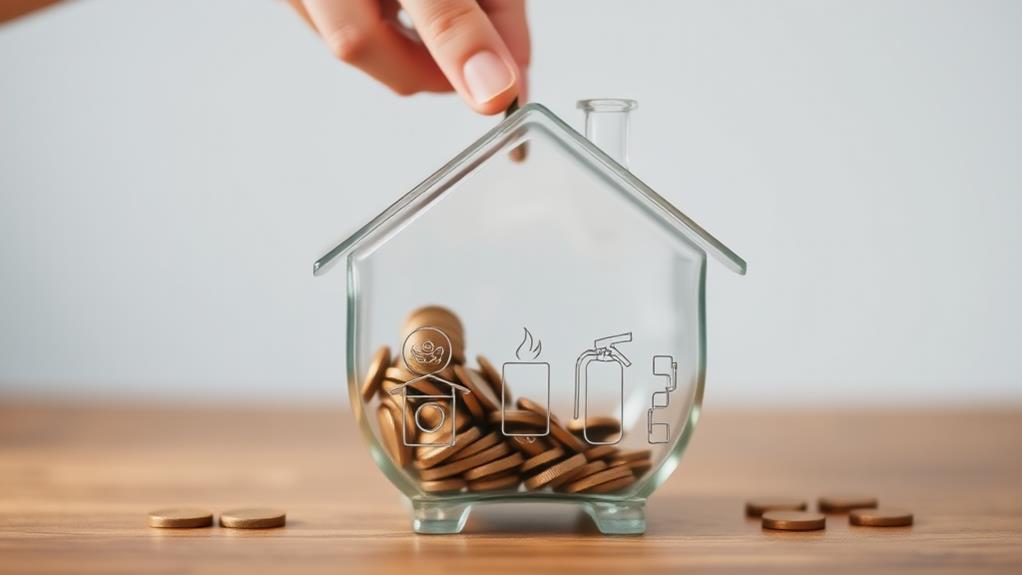
When planning safety upgrades during a renovation, establishing a comprehensive budget is crucial for ensuring that all necessary improvements are implemented without compromising financial stability. Begin by prioritizing safety features based on risk assessment and local building codes. Allocate funds for essential elements such as fire safety systems, structural reinforcements, and electrical upgrades before considering optional enhancements.
Research costs associated with materials, labor, and potential permits to create accurate estimates. Include a contingency fund of 10-20% to account for unforeseen expenses or complications. Consider long-term savings from energy-efficient upgrades and potential insurance premium reductions when evaluating costs.
Explore financing options, such as home improvement loans or government grants for safety-related renovations. Some jurisdictions offer incentives for specific upgrades, like seismic retrofitting or accessibility improvements. If budget constraints arise, phase the upgrades over time, focusing on the most critical safety issues first.
Consult with licensed contractors and safety experts to ensure all upgrades meet current standards and regulations. Obtain multiple quotes and carefully review contracts before committing to any work. Regular budget reviews throughout the renovation process will help maintain financial control and ensure the successful implementation of safety upgrades.
Hiring Certified Safety Professionals
The decision to hire certified safety professionals is a critical step in ensuring the success and compliance of your renovation safety upgrades. These experts bring specialized knowledge and experience to your project, helping you navigate complex safety regulations and industry best practices.
When selecting safety professionals, look for certifications from recognized organizations such as the Board of Certified Safety Professionals (BCSP) or the National Association of Safety Professionals (NASP). These credentials demonstrate a high level of expertise and commitment to ongoing education in safety standards.
Certified safety professionals can assist with various aspects of your renovation, including risk assessments, safety plan development, and implementation of safety measures. They can also provide valuable training for your construction team, ensuring everyone on-site understands and adheres to safety protocols.
Consider hiring safety professionals early in the planning process to integrate safety considerations into your renovation design. This proactive approach can help identify potential hazards and implement cost-effective solutions before construction begins. Additionally, these experts can help you stay compliant with local building codes and OSHA regulations, reducing the risk of fines and project delays.
Frequently Asked Questions
How Often Should I Reassess My Home's Safety Features?
You should reassess your home's safety features annually, or after significant changes like renovations or life events. Additionally, conduct thorough inspections every 3-5 years, and stay informed about new safety technologies and recommendations from experts.
Are Smart Home Devices Beneficial for Overall Home Safety?
Smart home devices can significantly enhance overall home safety. They offer features like remote monitoring, automated alerts, and integration with security systems. These devices provide real-time updates, enable quick responses to emergencies, and can deter potential intruders.
What Safety Upgrades Can Increase My Home's Resale Value?
Safety upgrades that can increase your home's resale value include installing modern smoke detectors, carbon monoxide alarms, security systems, and outdoor lighting. Upgrading electrical systems, reinforcing doors and windows, and adding smart home features can also boost property value.
How Can I Make Safety Upgrades More Aesthetically Pleasing?
Beauty is in the eye of the beholder, but safety can be stylish too. Opt for sleek smoke detectors, elegant handrails, and modern security cameras. Choose cohesive finishes and integrate upgrades seamlessly into your home's design for a polished look.
Are There Tax Incentives Available for Implementing Certain Safety Upgrades?
Some safety upgrades may qualify for tax incentives, depending on your location and the specific improvements. Check with local authorities or a tax professional to explore potential deductions or credits for energy-efficient, accessibility, or disaster-preparedness upgrades.
Conclusion
Ironically, while homeowners often focus on aesthetic improvements, safety upgrades remain the unsung heroes of renovation. Prioritizing these essential enhancements may not yield Instagram-worthy results, but they offer the priceless gift of peace of mind. By methodically addressing electrical, fire, structural, plumbing, fall prevention, and security concerns, residents can create a haven that's as secure as it is stylish. In the grand theater of home improvement, safety upgrades may not receive standing ovations, but they quietly steal the show.
